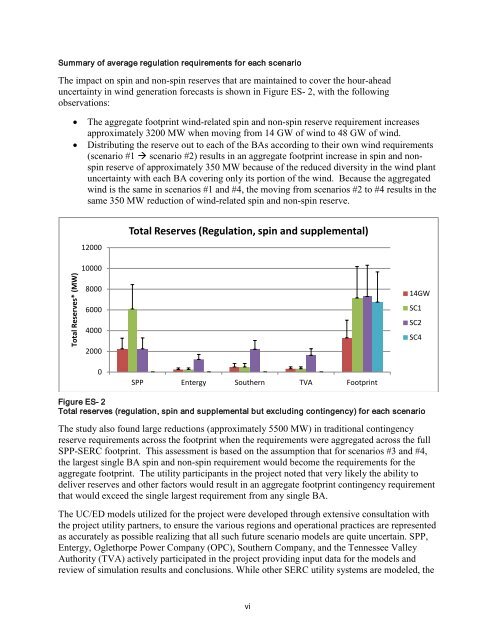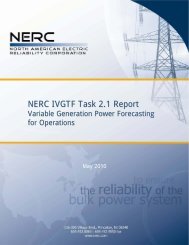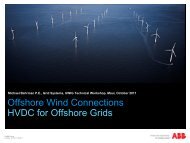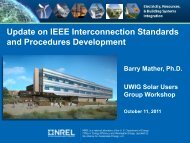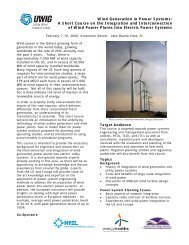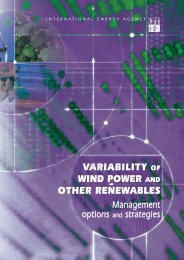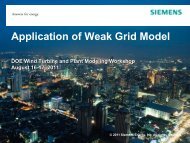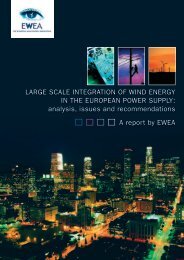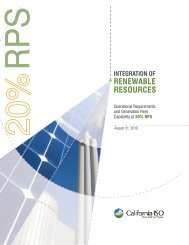Integrating Southwest Power Pool Wind to Southeast Electricity ...
Integrating Southwest Power Pool Wind to Southeast Electricity ...
Integrating Southwest Power Pool Wind to Southeast Electricity ...
You also want an ePaper? Increase the reach of your titles
YUMPU automatically turns print PDFs into web optimized ePapers that Google loves.
Summary of average regulation requirements for each scenario<br />
The impact on spin and non-spin reserves that are maintained <strong>to</strong> cover the hour-ahead<br />
uncertainty in wind generation forecasts is shown in Figure ES- 2, with the following<br />
observations:<br />
• The aggregate footprint wind-related spin and non-spin reserve requirement increases<br />
approximately 3200 MW when moving from 14 GW of wind <strong>to</strong> 48 GW of wind.<br />
• Distributing the reserve out <strong>to</strong> each of the BAs according <strong>to</strong> their own wind requirements<br />
(scenario #1 scenario #2) results in an aggregate footprint increase in spin and nonspin<br />
reserve of approximately 350 MW because of the reduced diversity in the wind plant<br />
uncertainty with each BA covering only its portion of the wind. Because the aggregated<br />
wind is the same in scenarios #1 and #4, the moving from scenarios #2 <strong>to</strong> #4 results in the<br />
same 350 MW reduction of wind-related spin and non-spin reserve.<br />
Total Reserves* (MW)<br />
12000<br />
10000<br />
8000<br />
6000<br />
4000<br />
2000<br />
0<br />
Total Reserves (Regulation, spin and supplemental)<br />
SPP Entergy Southern TVA Footprint<br />
Figure ES- 2<br />
Total reserves (regulation, spin and supplemental but excluding contingency) for each scenario<br />
The study also found large reductions (approximately 5500 MW) in traditional contingency<br />
reserve requirements across the footprint when the requirements were aggregated across the full<br />
SPP-SERC footprint. This assessment is based on the assumption that for scenarios #3 and #4,<br />
the largest single BA spin and non-spin requirement would become the requirements for the<br />
aggregate footprint. The utility participants in the project noted that very likely the ability <strong>to</strong><br />
deliver reserves and other fac<strong>to</strong>rs would result in an aggregate footprint contingency requirement<br />
that would exceed the single largest requirement from any single BA.<br />
The UC/ED models utilized for the project were developed through extensive consultation with<br />
the project utility partners, <strong>to</strong> ensure the various regions and operational practices are represented<br />
as accurately as possible realizing that all such future scenario models are quite uncertain. SPP,<br />
Entergy, Oglethorpe <strong>Power</strong> Company (OPC), Southern Company, and the Tennessee Valley<br />
Authority (TVA) actively participated in the project providing input data for the models and<br />
review of simulation results and conclusions. While other SERC utility systems are modeled, the<br />
vi<br />
14GW<br />
SC1<br />
SC2<br />
SC4


